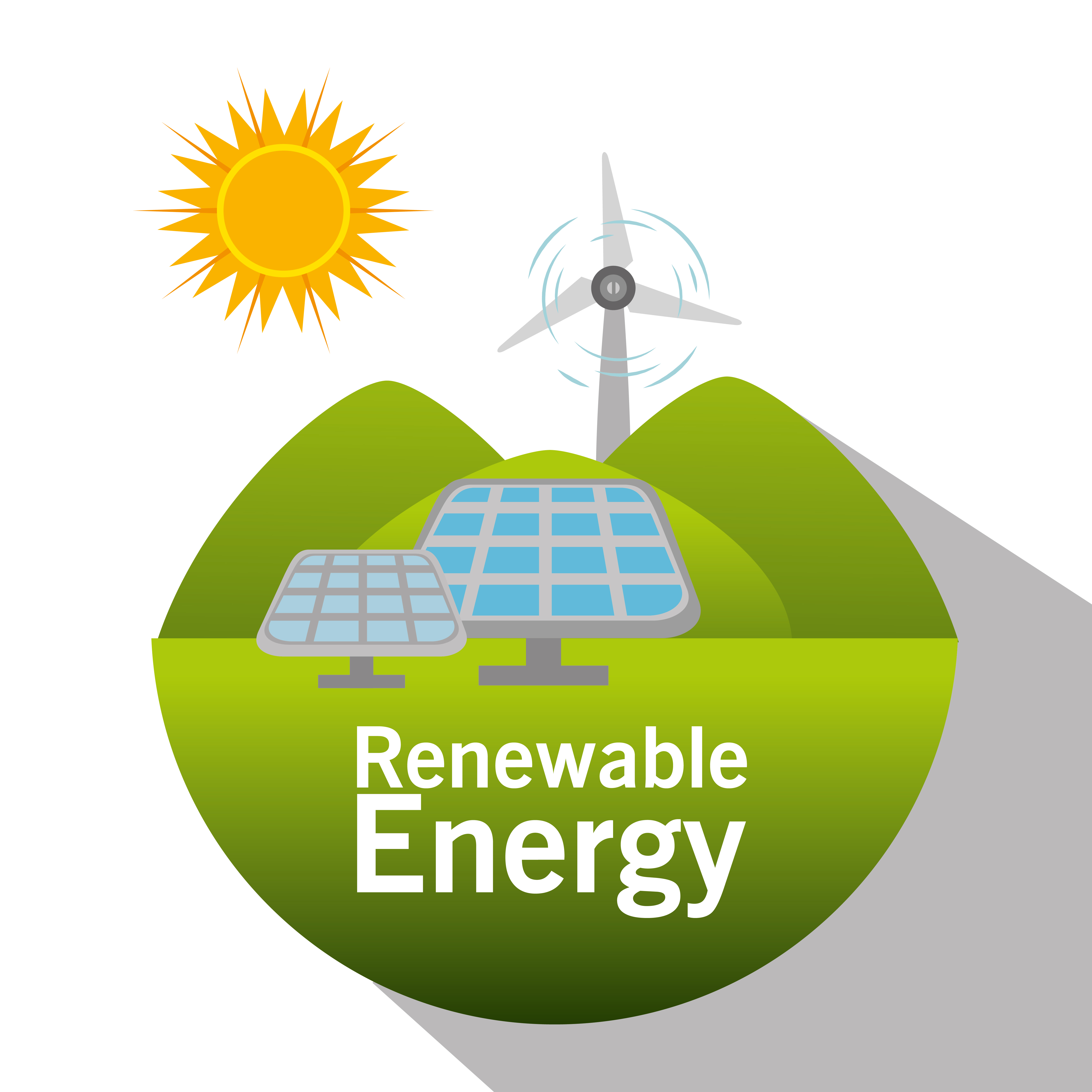Integration of Renewable Energy Sources in Smart Grids
 Ahmad W Khan
Ahmad W Khan
Abstract
This paper provides an in-depth analysis of integrating renewable energy sources (RES) into India's smart grids, focusing on the challenges and solutions involved. It delves into energy storage technologies and predictive maintenance strategies, offering a comprehensive overview.
Table of Contents
Introduction
Integration of Renewable Energy Sources in Smart Grids
Challenges
Intermittency and Variability
Grid Infrastructure
Regulatory and Market Barriers
Solutions
Advanced Grid Management
Flexible Generation and Consumption
Energy Storage Solutions and Technologies
Types of Energy Storage
Battery Energy Storage Systems (BESS)
Pumped Hydro Storage
Flywheel Energy Storage
Benefits of Energy Storage
Grid Stability and Reliability
Frequency Regulation
Peak Shaving
Predictive Maintenance in Energy Systems
Importance of Predictive Maintenance
Preventing Failures
Extending Equipment Lifespan
Techniques and Technologies
Condition Monitoring
Machine Learning and AI
Case Studies
Case Study 1: India’s National Solar Mission
Case Study 2: Delhi’s Energy Storage Initiatives
Conclusion
References
Introduction
The transition to renewable energy is essential to address the pressing challenges of climate change and environmental degradation. Renewable energy sources such as solar, wind, and hydroelectric power offer sustainable alternatives to fossil fuels. However, integrating these intermittent and variable energy sources into existing power grids poses significant challenges. Smart grids, with their advanced communication and automation capabilities, provide a solution by enabling more efficient and reliable integration of RES. This paper explores the various aspects of this integration, focusing on energy storage solutions and predictive maintenance strategies that enhance grid performance and reliability in the Indian context.
Integration of Renewable Energy Sources in Smart Grids
Challenges
Intermittency and Variability Renewable energy sources, particularly solar and wind power, are inherently intermittent and variable. Solar power generation ceases at night, and its output can be significantly reduced by cloud cover. Similarly, wind power depends on weather conditions, with output varying from day to day and even hour to hour. This intermittency makes it challenging to maintain a stable and reliable power supply in India.
- Example: During a cloudy day or a period of low wind, the energy output from solar panels and wind turbines can drop dramatically, causing fluctuations in the power supply.
Grid Infrastructure Traditional power grids in India were designed for centralized power generation and distribution, with large power plants feeding electricity into the grid, which is then distributed to consumers. The integration of decentralized, small-scale renewable energy sources requires significant changes to grid infrastructure to accommodate the bidirectional flow of electricity and manage multiple generation points.
- Example: Distributed generation from rooftop solar panels and small wind turbines can create complexities in grid management, requiring advanced grid control systems to balance supply and demand.
Regulatory and Market Barriers Regulatory frameworks and market mechanisms in India often lag behind technological advancements, creating barriers to the widespread adoption of RES. Existing policies may not provide sufficient incentives for integrating renewable energy into the grid, and market structures may not support the economic viability of RES projects.
- Example: In some regions, policies favor traditional power generation methods over renewable energy, limiting the growth and integration of RES.
Solutions
Advanced Grid Management Advanced grid management systems leverage real-time data analytics, automated control systems, and communication technologies to handle the complexity and variability of RES. These systems can monitor and control the flow of electricity, optimize the use of renewable energy, and ensure grid stability.
- Example: Real-time data from smart meters and sensors can be used to dynamically adjust the power output from renewable sources, match supply with demand, and prevent grid overloads.
Flexible Generation and Consumption Flexible generation and consumption patterns can help match the variable output of renewable energy sources. Demand-side management programs incentivize consumers to shift their energy use to off-peak times or periods of high renewable energy generation, reducing the strain on the grid.
- Example: Time-of-use pricing encourages consumers to use electricity during periods of low demand or high renewable energy availability, such as mid-day when solar power generation is at its peak.
Energy Storage Solutions and Technologies
Types of Energy Storage
Battery Energy Storage Systems (BESS) Battery energy storage systems are a versatile and scalable solution for storing electricity generated by renewable sources. Lithium-ion batteries, in particular, are favored for their high energy density, efficiency, and declining costs.
Example: The Tata Power Delhi Distribution Limited (TPDDL) has implemented a large-scale battery storage system to store energy generated by renewable sources and provide grid stability.
Statistical Insight: According to the Central Electricity Authority (CEA), India's installed capacity of battery storage is expected to reach 10 GW by 2025, reflecting the growing adoption of BESS.
Pumped Hydro Storage Pumped hydro storage is one of the oldest and most widely used energy storage technologies. It involves using surplus electricity to pump water from a lower reservoir to an upper reservoir. The stored water is then released to generate electricity when needed.
Example: The Sardar Sarovar Dam in Gujarat is an example of a pumped hydro storage facility that helps balance the grid by storing excess energy and releasing it during peak demand periods.
Statistical Insight: Pumped hydro storage accounts for over 95% of the world's installed storage capacity, with a total capacity of approximately 140 GW.
Flywheel Energy Storage Flywheel energy storage systems store energy in the form of rotational kinetic energy. These systems can provide rapid response times, making them suitable for frequency regulation and short-term energy storage.
Example: Flywheel energy storage systems are being explored by the Indian Institute of Technology (IIT) Delhi for their potential to provide frequency regulation services to the grid.
Statistical Insight: Flywheel energy storage systems typically have an efficiency of 85-90% and can respond to changes in grid frequency within milliseconds.
Benefits of Energy Storage
Grid Stability and Reliability Energy storage systems help balance supply and demand, ensuring grid stability and reliability. By storing excess electricity generated during periods of high renewable energy output and discharging it during periods of low output, energy storage can smooth out fluctuations in the power supply.
- Example: During a sunny day, excess solar power can be stored in batteries and used at night or during cloudy periods, maintaining a consistent power supply.
Frequency Regulation Energy storage systems can provide frequency regulation services by quickly responding to changes in grid frequency. This helps maintain the grid's operational frequency within specified limits, preventing blackouts and ensuring reliable power delivery.
- Example: Battery storage systems can inject or absorb power in response to frequency deviations, stabilizing the grid and preventing frequency-related issues.
Peak Shaving Energy storage systems can reduce the need for peaking power plants by discharging stored energy during peak demand periods. This not only reduces costs but also minimizes the environmental impact of relying on fossil-fuel-based peaking plants.
- Example: Utility-scale battery storage systems can be deployed during high-demand summer afternoons, reducing the need for additional power generation from peaking plants.
Predictive Maintenance in Energy Systems
Importance of Predictive Maintenance
Preventing Failures Predictive maintenance uses data analytics and real-time monitoring to predict and prevent equipment failures. By identifying potential issues before they lead to failures, predictive maintenance reduces downtime, maintenance costs, and the risk of catastrophic failures.
Example: Sensors and IoT devices can monitor the health of transformers, identifying issues such as overheating or abnormal vibrations that may indicate an impending failure.
Statistical Insight: According to a study by McKinsey & Company, predictive maintenance can reduce maintenance costs by 10-40%, reduce downtime by 30-50%, and extend equipment life by 20-40%.
Extending Equipment Lifespan Regular monitoring and maintenance can extend the lifespan of grid infrastructure, ensuring that equipment operates efficiently and reliably for longer periods. This not only reduces the need for costly replacements but also improves overall grid performance.
- Example: Predictive algorithms can analyze historical data to forecast potential failures and schedule timely maintenance, extending the life of critical grid components such as transformers, circuit breakers, and cables.
Techniques and Technologies
Condition Monitoring Condition monitoring involves the continuous assessment of equipment health using sensors and data analytics. By monitoring parameters such as temperature, vibration, and oil quality, condition monitoring can detect early signs of equipment degradation and trigger preventive maintenance actions.
Example: Vibration analysis can identify imbalances or misalignments in rotating equipment, while thermal imaging can detect overheating in electrical components.
Statistical Insight: Condition monitoring can reduce unplanned outages by up to 50% and increase equipment availability by 10-15%, according to a report by the International Society of Automation (ISA).
Machine Learning and AI Machine learning and AI technologies can analyze vast amounts of data to predict equipment failures and optimize maintenance schedules. These technologies can identify patterns and anomalies that may not be apparent through traditional monitoring techniques, enabling more accurate and timely maintenance interventions.
Example: Predictive models can analyze data from sensors, historical maintenance records, and external factors such as weather conditions to forecast equipment failures and recommend maintenance actions.
Statistical Insight: A study by IBM found that predictive maintenance powered by AI can increase the accuracy of failure predictions by 20-30% and reduce maintenance costs by up to 25%.
Case Studies:
Case Study 1: India’s National Solar Mission
Overview: Launched in 2010, India’s National Solar Mission aims to establish India as a global leader in solar energy. The mission focuses on large-scale grid-connected solar power projects, as well as off-grid applications to meet rural energy needs.
Key Insights: The mission has driven significant growth in solar capacity, with India’s installed solar capacity reaching 40 GW by 2020. The use of advanced grid management systems and energy storage solutions has been critical in integrating this capacity into the grid.
Data: According to the Ministry of New and Renewable Energy (MNRE), India’s solar capacity increased from 2.6 GW in 2014 to 40 GW in 2020.
Case Study 2: Delhi’s Energy Storage Initiatives
Overview: Delhi, has been at the forefront of implementing energy storage solutions to support the integration of renewable energy. The Delhi government has partnered with various stakeholders to deploy large-scale battery storage systems and pilot innovative energy storage technologies.
Key Insights: These initiatives have improved grid stability, reduced peak demand, and provided frequency regulation services. The deployment of BESS has also supported the integration of solar power generated by rooftop installations across the city.
Data: The Delhi government’s energy storage projects have added over 50 MW of battery storage capacity, with plans to expand to 200 MW by 2025, according to the Delhi Electricity Regulatory Commission (DERC).
Conclusion
The integration of renewable energy sources into India’s smart grids is essential for a sustainable energy future. Addressing the challenges of intermittency, grid infrastructure, and regulatory barriers requires advanced grid management, energy storage solutions, and predictive maintenance strategies. This paper highlights the significant progress and potential of these technologies in modernizing India’s power sector.
References
Ministry of New and Renewable Energy (MNRE). "National Solar Mission."
Central Electricity Authority (CEA). "Report on Battery Storage in India."
Delhi Electricity Regulatory Commission (DERC). "Energy Storage Initiatives in Delhi."
International Energy Agency (IEA). "Renewables 2020."
U.S. Department of Energy. "Grid Modernization Initiative."
Tesla, Inc. "Tesla Powerwall."
Beacon Power. "Flywheel Energy Storage."
Federal Ministry for Economic Affairs and Energy, Germany. "Energiewende."
Subscribe to my newsletter
Read articles from Ahmad W Khan directly inside your inbox. Subscribe to the newsletter, and don't miss out.
Written by
